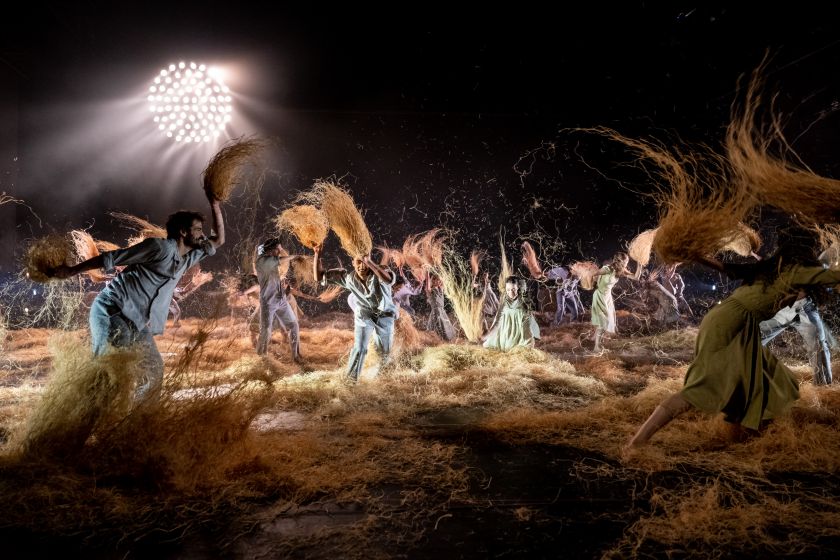Flying Straw and Danced Joy

The Dortmund Ballet makes a guest appearance with Midsummer Night’s Dream by Alexander Ekman, an energetic evening of dance about the Nordic summer solstice celebration.
Despite its name, Midsummer Night’s Dream by Alexander Ekman is not a dance version of Shakespeare’s classic about Puck, Oberon and Titania. Rather, the evening presented at the end of August as a guest appearance of the Dortmund Ballett is about the traditional Swedish summer solstice celebrations.
The ballet, which is inspired by the customs of Ekman’s Nordic homeland, had its world premiere at the Royal Swedish Ballet in Stockholm in 2015. It has been shown at the Dortmund Ballet since 2019, where Ekman reworked it for the premiere with the local dancers. Ekman is considered one of the most interesting choreographers of our times, having created works for Boston Ballet, Nederlands Dans Theater, Les Ballets de Monte-Carlo and others. In addition, he is known for his special gift of imagination, which allows him to stage surreal total works of art, making his Midsummer Night’s Dream a fantastical journey through the cosmos of our dreams.
The Dortmund Ballet has been invited to perform A Midsummer Night’s Dream at the Salzburg Festival. The performance also features the NRW Junior Ballett, a vocal soloist and the Dortmunder Philharmoniker, with piano, a string quartet and percussion also performing live on stage.
The music was created by Mikael Karlsson, using recitative-like passages, plenty of rhythm and recurring sounds inspired by Scandinavian folklore. Mythical energy and enchanting sensuality are audible in his commissioned score. This verve is taken up by Alexander Ekman, who has found his own approach to the mythical story: he does so at times with ecstatic, exuberant choreography, at others by giving everyday gestures a humoristic treatment. At any rate, it is always full of energy, and occasionally even seems inebriated.
The initial orderly harvesting of wheat soon turns into the dancers giddily throwing stalks and their own bodies about (for allergy reasons, raffia, an anti-allergenic textile is used, so that neither audience nor dancers suffer an adverse reaction). The pas de deux continue on balls of hay, and a carefree game ensues, occasionally tipping into aggression. Dance takes place not only on pointe, but also seated on chairs or as if in slow motion.
When night falls, this exploration of Nordic myths in dance turns towards mythical creatures and a magical half-world. Here, people seem to levitate, furniture rises into the air, fantasy and reality blur. A whole group of dancers join closely to form a kind of centipede.

An Ecstatic Celebration. Swedish symbols, for example a maypole festooned with branches and flowers, and flower garlands woven into headdresses – a symbol of rebirth and fertility – are depicted, alongside meals at a long table. Dream and reality merge, the natural and supernatural, humans and mythical creatures meet.
Ekman summarizes the traditions of the midsummer solstice – which is celebrated in Sweden between the 19th and 25th of June, and which recently also inspired the film Midsommar by Ari Aster, a Netflix hit – in a choreography which is as magical as it is humorous. “I love it when things are understood without having to explain them,” the choreographer sums up his intentions. At any rate, his dance evening is full of powerful images and impresses with its cheerful, energetic yet mystical character. The audience will witness Alexander Ekman celebrating not only nature, but also freedom, light-heartedness, mischief and humanism in his choreographic language.
Theresa Steininger
Translation: Alexa Nieschlag
First published on 11.05.2024 in Die Presse Kultur Spezial: Salzburg Festival
